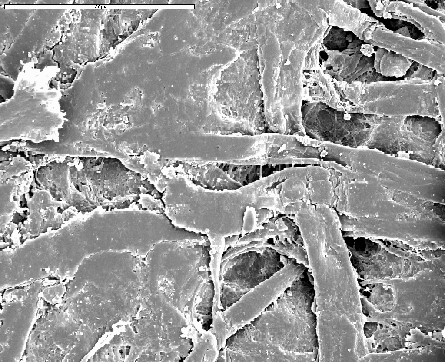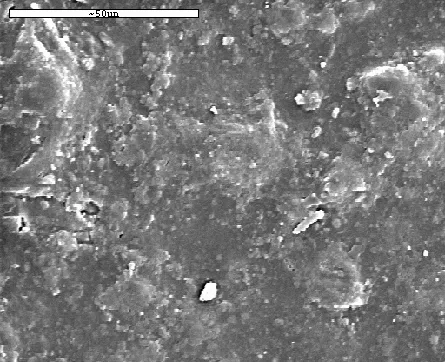Dirty money 1: Expect germs
How many bacteria banknotes host depends on many factors, including what material the currency had been printed on
China’s yuan banknotes are bacterial magnets, relatively speaking, while Australian dollars circulate virtually germfree. The difference traces to a number of factors — not least being what they’ve been printed on, a new international study concludes.


Australia’s advantage: It’s currency is made from a synthetic polymer. So its dollars not only are durable but their relatively slick surfaces also boast a bonus — they resist giving germs much of a toehold.
Frank Vriesekoop of the University of Ballarat, Australia, and his colleagues collected 1,280 banknotes from food outlets across 10 different countries spanning from the United States and United Kingdom through Nigeria, China and Australia. All bills were collected from restaurants and other food purveyors — from street vendors to supermarkets, from cafes to butcher shops.
In the United States, the cleanest dollars hosted just 20 bugs, which the researchers refer to as colony forming units, or CFUs; the dirtiest greenbacks hosted 25,000 — which translates to about 128 CFUs per square centimeter. One factor likely contributing to the huge spread: a bill’s age.
The number of creases and folds in a bill correlated with a bill’s age. For instance, “we found that the number of folds on the British banknotes was linked to a logarithmic increase in the average bacterial cells found per square centimeter,” Vriesekoop’s team reports in the December Foodborne Pathogens and Disease.
Banknotes collected in low-income countries tended to harbor more germs than those from industrial nations. “This can be due to faster circulation of banknotes and removal of damaged banknotes from circulation,” Vriesekoop speculates, or “higher levels of prosperity could be linked to higher levels of general sanitation.”
The new paper is hardly the first to find germs on money. However, earlier published reports usually quantified contamination within a single country. Moreover, Vriesekoop points out, “almost every study used a significantly different methodology,” so “there was no appropriate means of comparison between the various reports.”
The new paper’s ability to compare values across a range of countries around the globe is what allowed it to home in on one of its more intriguing observations: that a bill’s fabric correlated with its propensity to collect germs.
Australia’s, New Zealand’s and some of Mexico’s bills differed from the rest in being made from a polymer, or plasticlike, material. In general, polymer bills hosted fewer than 10 germs per square centimeter. And in Mexico, where both polymer and cotton forms of the same banknote were available, Vriesekoop’s group measured four times as many germs on the cotton ones.
A comparison of the different bills under the microscope showed that polymer ones had a much smoother surface, one “which appears to hinder the adherence of bacteria.” This plastic-cotton difference, Vriesekoop says, also explains an initial conundrum: why Aussie dollars look so clean.
Years back when he couldn’t find solid data on the ability of food handling to potentially taint money, one of his students designed a study to investigate the issue. But her initial assays turned up very low bacterial counts. Off-the-charts low compared to previously published reports. So the Ballarat group repeated the experiment — only to again turn up very low contamination.
Still skeptical, Vriesekoop convinced colleagues in New Zealand to try their hand with local currency. They did — and came up with data not much different from the Australian team’s. Only then, Vriesekoop says, did it dawn on him that they might be witnessing a polymer-banknote effect. And that’s what prompted him to probe currencies across a range of continents.
Implications
I asked the microbiologist what to make of his team’s new findings. Did they uncover a hazard or was the contamination too low to matter?
Overall, Vriesekoop says, the number of bugs hiding out on a banknote tends to be small. But occasionally a hot bill will turn up. For instance, although the “bulk” of the 118 $5 and $20 bills that his team surveyed harbored no more than 10 CFUs per square centimeter, he notes that one or two hosted at least 10 times that many. So the occasional bill may indeed be relatively germy.
That said, he conceded that most of the bugs identified on the bills looked relatively harmless. Their presence, however, reinforces the potential for sickening contamination if the person who last handled a banknote was ill or had touched tainted food.
Finally, I asked what to make of all those nooks and crannies on bills made from cotton rag fibers. In a study I reported on several years back looking at cocaine contamination of banknotes, tiny drug particles were found lodged in microscopic fiber pockets on a U.S. dollar’s surface. This suggested greenbacks might prove not only a good medium for collecting tiny particles, but also for sequestering them. If pocketed away securely enough, those pollutant particles might not rub off onto our hands once they had became embedded in a bill.
That’s also basically the argument proffered to explain data indicating that wood cutting boards are less likely than glass or plastic ones to contribute to the bacterial cross contamination of foods. The germs get into the crannies of wood’s fibers, investigations showed, and then either died or couldn’t get out.
If the same proves true for germs on money, might that not suggest paper currency could be safer to handle than polymer bills, where the germs remain sitting on the surface with no grab bars to keep from rubbing off?
“We do not know!” Vriesekoop says, but “we are about to start another study wjere we will investigate the survival of bacteria on banknotes. Our current paper only represents a snapshot of what we found on the notes when obtained from a food outlet. Now, we want to know how long bacteria will stay alive when we place them on both cotton-based and polymer-based notes.
“Our prediction is that they stay alive longer on cotton-based notes.”
Clearly, more research is needed. But until more data become available, the new paper’s authors argue that we’d all do well to play it safe and wash our hands after touching any money.
Next: Dirty money 2: Expect traces of BPA